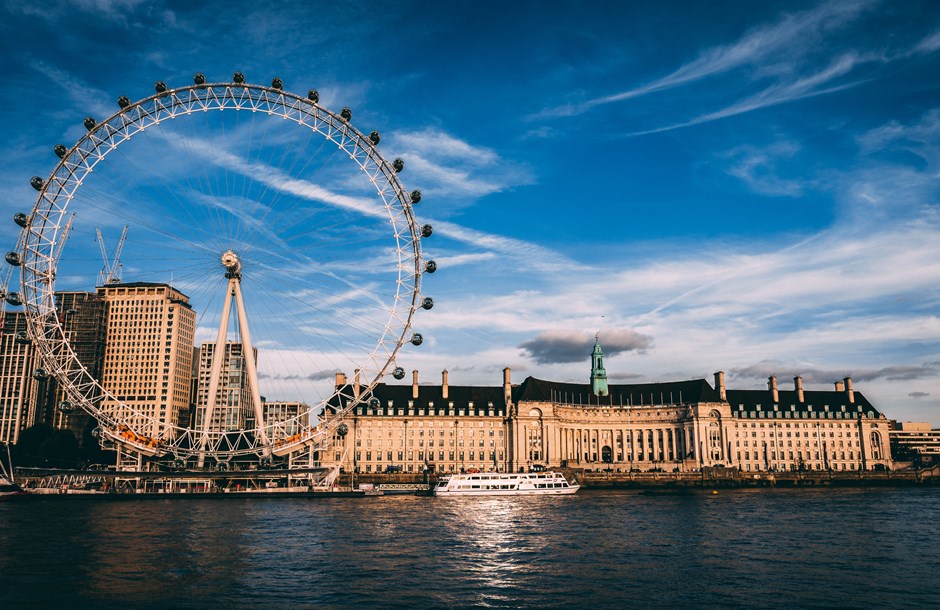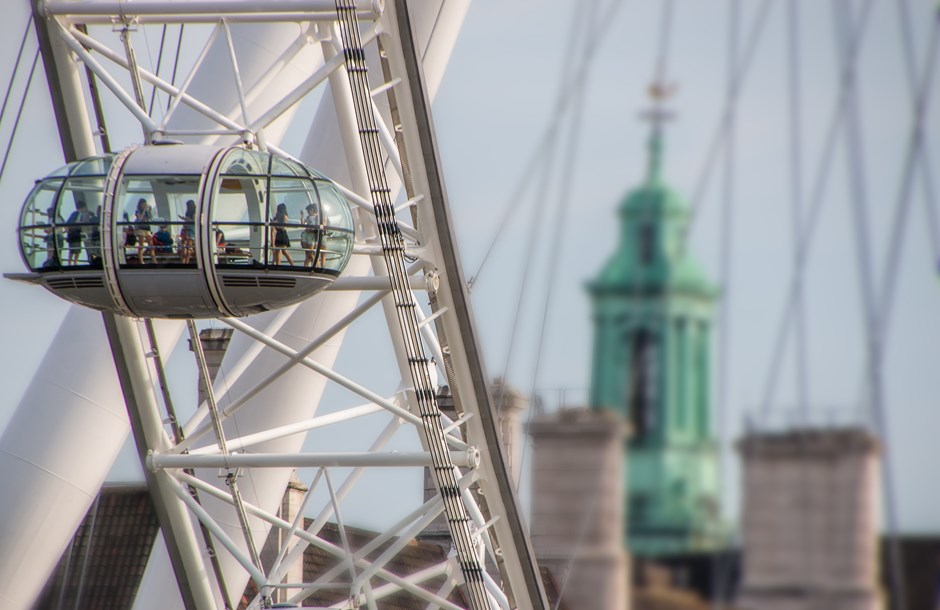The construction of the London Eye: A modern engineering marvel
When tourists think of London structures, they think of Big Ben, Buckingham Palace, St Pauls Cathedral … and the London Eye. It is a modern engineering marvel, Europe’s tallest cantilevered observation wheel and London’s most popular paid attraction. 3.5 million people take a ride in its 32 pods each year.
“The Eye has done for London what the Eiffel Tower did for Paris,” said the architect Sir Richard Rogers. It lets “people climb above the city and look back down on it. Not just specialists or rich people, but everybody. That's the beauty of it: it is public and accessible, and it is in a great position at the heart of London.”
The London Eye construction process was a challenging one for its architects, designers and building contractors, but ultimately a rewarding one which gave London one of its most iconic landmarks.

Where is the London Eye?
The London Eye is on the south bank of the River Thames. It is close to County Hall and Westminster Bridge. The nearest underground stations are Waterloo, Embankment and Lambeth Bridge.
When was the London Eye built?
Construction of the London Eye began in 1998 and it was officially opened on New Year’s Eve 1999 by Prime Minister Tony Blair – although it did not open to the public until March 2000.
The idea behind the London Eye
The London Eye was the idea of David Marks and Julia Barfield, a husband and wife team of architects. They submitted the idea for a competition in 1993 for a building or structure to mark the millennium in the UK. Nothing came of the competition in the end, but Marks and Barfield persisted with their idea for a Ferris wheel over the Thames.

The construction of the famous landmark
Designing and planning the London Eye
The London Eye was a huge feat of planning and design. Marks and Barfield assembled an international team of specialists to work on the project, including CAD modellers, steelwork contractors, architects, design managers and civil engineers.
The initial design was for a wheel with 60 pods, each holding 16 people, and a wheel 500 feet high. This was changed when the pods were tested in the French village where they were manufactured. 25 people could easily fit inside a pod, so it was decided to reduce the number of pods to 32, which would give better views because there would be more space between each pod.
If you were wondering, there are 32 London boroughs!
Construction challenges and solutions
Construction of the Eye took only 14 months.
However, assembling a 443-foot-high Ferris wheel on the banks of one of the world’s busiest rivers was always going to be a challenge. The individual pieces were transported along the Thames by barge and assembled on eight floating islands. Tower Bridge had to be raised to allow the largest elements of the structure through.
Hoisting the finished wheel into position was a major challenge for engineers. It was not without incident, either, as a cable came loose, meaning the wheel did not lift up first time. Second time around, it was raised at the rate of two degrees an hour until the wheel reached 65 degrees. It was left in that position before the second phase of the lift could take place.
Each pod or capsule weighs 10 tonnes, and the wheel rotates at 26cm per second (only twice as fast as the speed of an average tortoise). The rim of the London Eye is supported by tensioned steel cables.
At the time of its construction it was the tallest Ferris wheel in the world. It is still the tallest Ferris wheel (or cantilevered observation wheel) in Europe.
The London Eye today: A symbol of modern London
Although it was only supposed to be a temporary structure, the London Eye has become a permanent feature of the London skyline. It was granted a permanent licence in 2002 by Lambeth Council. It continues to be one of not only London’s but the UK’s most popular tourist attractions, offering people a panoramic view of the city, extending for up to 25 miles in any direction on a clear day.
Inspired by the London Eye? Discover over 170 construction careers
Working on the London Eye would have been a career highlight for many of the people involved in its design and construction – architects to designers, construction managers to civil engineers. If you find iconic buildings or projects like the London Eye or the Channel Tunnel inspiring, find out more about the range of careers that are available in the construction industry.
